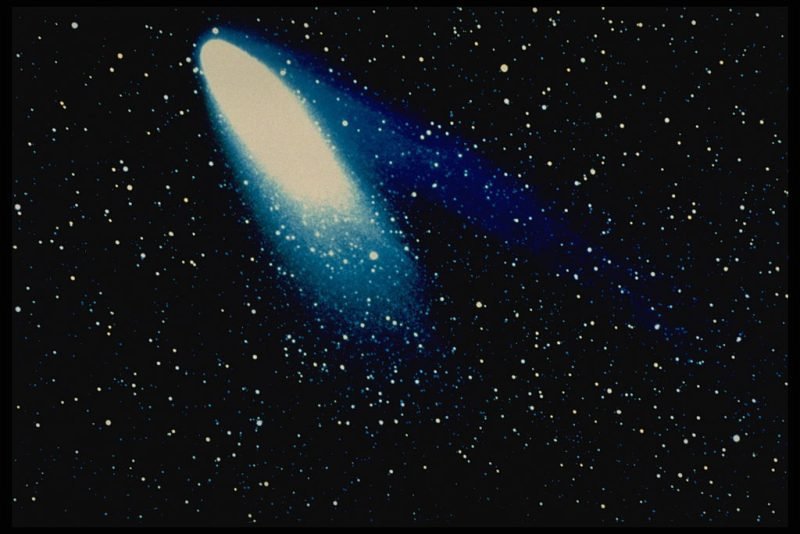
(NEXSTAR) — Skywatcher or not, you’ve likely heard of Halley’s comet. As popular as it is, however, seeing it may be a once-in-a-lifetime occurrence for some.
The comet, often referred to as just Halley, is believed to have been traveling through the night sky every so often for more than 2,000 years, according to NASA.
Comets — objects usually made up of ice, dust, and gases — orbit the sun. NASA says there may be billions of comets within our solar system, coming from either the Kuiper Belt or the Oort Cloud.
The Kuiper Belt is found beyond Neptune’s orbit and includes the beloved dwarf planet Pluto. The Oort Cloud, meanwhile, is hundreds of billions of miles away from our outermost planet, the European Space Agency explains.
Most, but not all, comets are considered periodic, flying into and through our solar system, giving us the chance to see some of them on a largely predictable schedule.
Humans didn’t always know that, causing them instead to consider a comet streaking through the sky as a bad omen.
English astronomer Edmond Halley helped to change that. In the early 1700s, Halley noted that bright comets spotted in 1531, 1607, and 1682 had similarities, suggesting it may have been the same comet, according to NASA.
He estimated that, come 1758, the comet would again appear in the night sky — and he was right. Halley’s observations would ultimately earn him the honor of having the first known periodic comet named after him.

Halley (the comet) is about nine miles long by five miles wide and, according to NASA, is among the least reflective — and thereby darkest — objects in our solar system. On its next orbit around the Sun, which takes about 76 years to complete in full, Halley is expected to lose between 3 to 10 feet of material from its surface.
“Thus, as the comet ages, it eventually dims in appearance and may lose all the ices in its nucleus,” NASA explains. “The tails disappear at that stage, and the comet finally evolves into a dark mass of rocky material or perhaps dissipates into dust.”
We know Halley has been losing debris on its orbits; you can even see it yourself. The Orionid meteor shower, which is visible from now until November 7, occurs as Earth travels through the debris Halley’s comet has shed during its orbit. Peak activity is expected on October 21, NASA says. (When Earth passes through Halley’s meteor stream again in May, we’ll get to observe the Eta Aquarid meteor shower.)
Thankfully, scientists say Halley itself “has shown no obvious signs of aging in its recorded appearances.”
It will be a while before you can see it for yourself, however. Halley’s comet was last visible from Earth in 1986, meaning we won’t have a chance to see it again until 2061. The comet is expected to appear in our skies around mid-June that year, Space.com reports, and remain visible into August.
The year may prove to be especially exciting for skywatchers: NASA says a total solar eclipse, like the event we experienced last year, will be visible from North America on April 20, 2061.






